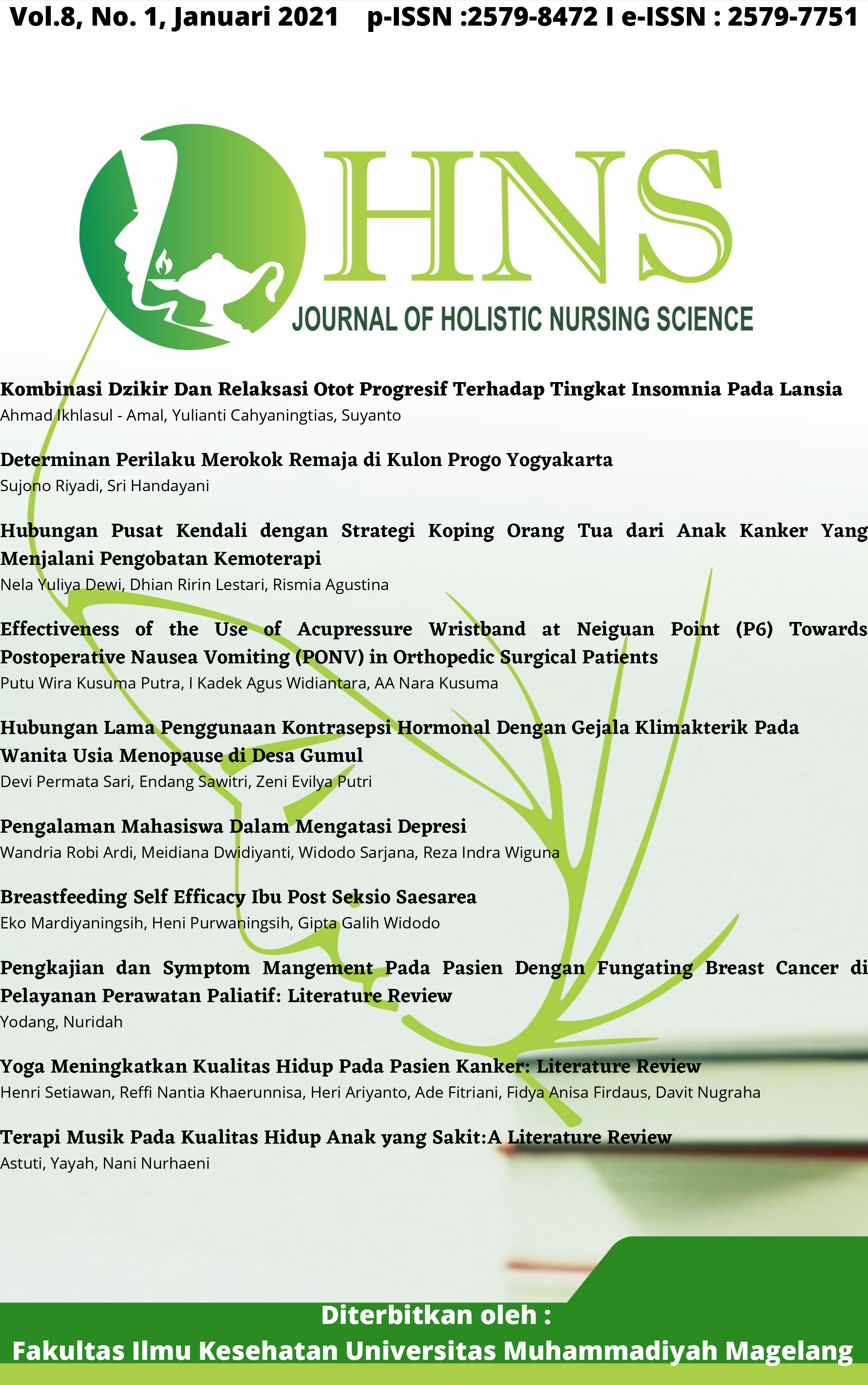Terapi Musik Pada Kualitas Hidup Anak yang Sakit:A Literature Review
Main Article Content
Abstract
During illness, children had a lot of unpleasant experiences. That experiences can reduce the quality of life in children. Music therapy is expected to improve the quality of life in sick children. This study aims to determine the effect of music therapy on the quality of life in sick children. Several online databases were searched from 2010-2020. The inclusion criteria of the articles are research articles, free full-text articles, articles written in English, and concerns on music therapy intervention programs for sick children aged 0-18 years old. There were six articles used for the review of this paper. The six articles are similar in the results that music therapy can improve the quality of life for sick children. The type of music therapy is active music therapy (the child is directly involved) and responsive (listening to music). Pediatric patients who are proven to be able to effectively improve the quality of life through music therapy are children with palliative care, brain tumors, Haematopoietic Stem Cell Transplants (HSCT), mental disorders, and children who are treated in ordinary inpatient rooms. Music therapy is proven to be effective in improving the quality of life of sick children with the various accompanying disease.
Downloads
Article Details

This work is licensed under a Creative Commons Attribution 4.0 International License.
Authors who publish their articles in JHNS retain full copyright of their work. JHNS does not require authors to transfer their copyright to the journal or Universitas Muhammadiyah Magelang as the publisher. The authors grant JHNS a license for the first publication.
